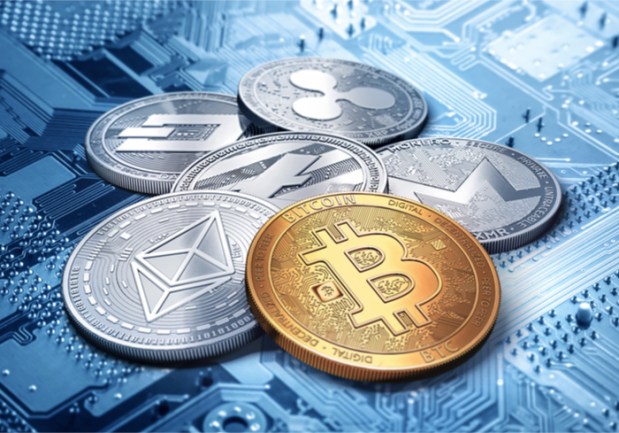Bitcoin’s One-Stop Pawn Shops

On November 14th 2017, the price of bitcoin was a little over $6,500 — a bit more than it is today at $6,300. It might be easy to look at that 5 percent year-on-year price decline and conclude that perhaps the world’s best-known cryptocurrency is getting more stable.
Those two data points belie the fact that the last 365 days have seen a wild ride for bitcoin and its investors.
Even though Bitcoin’s mid-November price this year is similar to last year’s, it is pretty unlikely that 2018 will see a repeat of what happened in 2017 as November and then December wore on. Last year, 10 days later — on Thanksgiving — the price of bitcoin was more than $8,500, and by December 1 its value was scraping $11,000. By mid-December, the price was approaching $20,000 — and people were openly speculating that 2018 would be the year the market would meet the $100,000 bitcoin. It was also at this point the term “bitcoin mania” began floating around, as all kinds of cryptocurrency “investors” came out of the woodwork, and starting making some very questionable financial decisions in an attempt to catch the crypto boom.
“We’ve seen mortgages being taken out to buy bitcoin … People do credit cards, equity lines,” Joseph Borg, president of the North American Securities Administrators Association (NASAA) said. “This is not something a guy who’s making $100,000 a year, who’s got a mortgage and two kids in college ought to be invested in.”
And for many, if not most, that was pretty sound advice: less than a week after that warning was issued, bitcoin hit its peak price just shy of $20,000, and then began it long and precipitous fall. At its lowest point the price of bitcoin dipped below $6,000 in June — but its price has been between $6,000 and $7,000 for most of the fall 2018.
Which brings us to today, where a sudden, inexplicable rise in bitcoin value is always possible (it wouldn’t be the first time such a spike happened) but at present it doesn’t seem that very many people are still interested in taking out a second mortgage on their house to finance their investments in bitcoin.
But a new group of lenders has emerged to help miners and bitcoin holders turn some of their cryptocurrency into more easily spendable fiat funds, without having to sell their coins.
The Basics Of Coin-Backed Lending
A variety of emerging lending platforms offer coin-backed loans — SALT Lending, Unchained Capital and Blockfi are three of the better-known and venture-backed names.
The basic primer, however, is that a coin owner applies to a lending platform, and offers his or her bitcoin cache as collateral on loan whose funds are paid out in fiat dollars. The LTV (loan to value) ratio required varies from platform to platform, but 35 to 50 percent is about the norm. That means someone who puts up $50,000 in bitcoin can expect to receive between $17,500 and $25,000 in loaned funds.
Interest rates often range — usually between 8 percent and 14 percent — as do loan structures. Unchained Capital, for example, doesn’t offer anything but interest-only loans, meaning that for the duration of the loan the borrower pays only an interest payment monthly and at the conclusion of the 24-month term can repay the entire principle in a single balloon payment. Other firms — SALT Lending, for example — offer both interest-only and principal-paying loans, with the latter offering more favorable interest rates.
And the end of the loan term, the borrower can either pay back what they owe in fiat, or allow that amount of their bitcoin collateral to be liquidated, with their remaining coins returned to their wallet.
Why Borrowers Use The Service
Most reviewers, even in friendly sources, note that using bitcoin for collateral is not the only way to get a loan — or even the best way. A customer with a strong credit score and employment history, for example, might well do better interest rate-wise with a personal loan from a bank, or an online lender like Lending Club.
But for someone whose profession is “bitcoin miner” and whose formal credit and official employment history are thin, traditional financing can be a bit challenging.
Besides, bitcoin miners have to eat — and being paid with bitcoin and then trying to buy food with it is still not all that easy. Blockfi, when asked why people used its lending service, reported that need was the main driver. Of those who used bitcoin as collateral for a loan, 57 percent reported doing so because they had to pay bills, cover expenses or pay taxes. Starting a business, buying more crypto and paying down debt were also given as reasons — each with 9 percent of borrowers naming them.
Borrowing against bitcoin also has some financial advantages to those who own bitcoin. Selling coins mean tax penalties — and requires giving up ownership. For a bitcoin miner or trader who believes that the market is going to rise, observed Joseph Kelly, CEO of crypto-backed loan provider Unchained Capital, simply selling off those assets is not palatable.
“The borrowers on our platform are often playing the long game with bitcoin — and are looking for better options to protect their total investments in cryptocurrency over time,” he said.
The Volatility Trouble
The trouble with bitcoin as an asset backing a loan, of course, is that bitcoin is a lot more volatile than the average car title or mortgage deed. Since December of 2017’s high point, bitcoin has lost two-thirds of its value.
This is why the LTV rates on the loans are so steep to start with. When the price of bitcoin drops to the point where the value of the assets is at risk of becoming less than the value of a loan, a margin call goes out that requires the borrower to either deposit more assets (more cryptocurrency) or pay back a share of the principle on the loan.
Unchained CEO Kelly noted that this has been a difficult part of the business, particularly in 2018 — but it is not insurmountable.
“Our clients are very responsive to margin call scenarios and tend to act quickly to deposit more collateral in these situation. The test for our platform came in January and February of this year when Bitcoin retreated 70 percent from $19,000 to $6,000 over the course of a few weeks. During that period 90 percent of our loans were margin called and 80 percent of clients responded within eight hours,” he said.
When borrowers don’t respond, Unchained and most of the other firms in the segment report that they liquidate crypto assets sufficient to pay off the loan and remaining costs, and refund remaining digital currency back to the borrower.
Today, Kelly noted, demand is still growing in the segment, though it is most accurately seen on their platform from within the bitcoin mining community itself — and for many watching the segment the question remains open as to whether this particular product will ever make it much past that niche.
“There are still several infrastructure problems. How do you source prices? How do you hedge against counterparty risk? How do you deal with hacks and custody issues?” Lucas Nuzzi, director of technology research at Digital Asset Research, told Forbes.
But loan providers in the space disagree. Zac Prince, CEO of Blockfi, notes that by using a very conservative 35 percent loan-to-value bar the firm can very adequately hedge against current market fluctuations. And he thinks that going forward, finding those right hedge marks will be what makes this emerging market able to grow to scale.
“In the nine months we’ve been lending, we haven’t had a single customer default on a loan,” he said.
